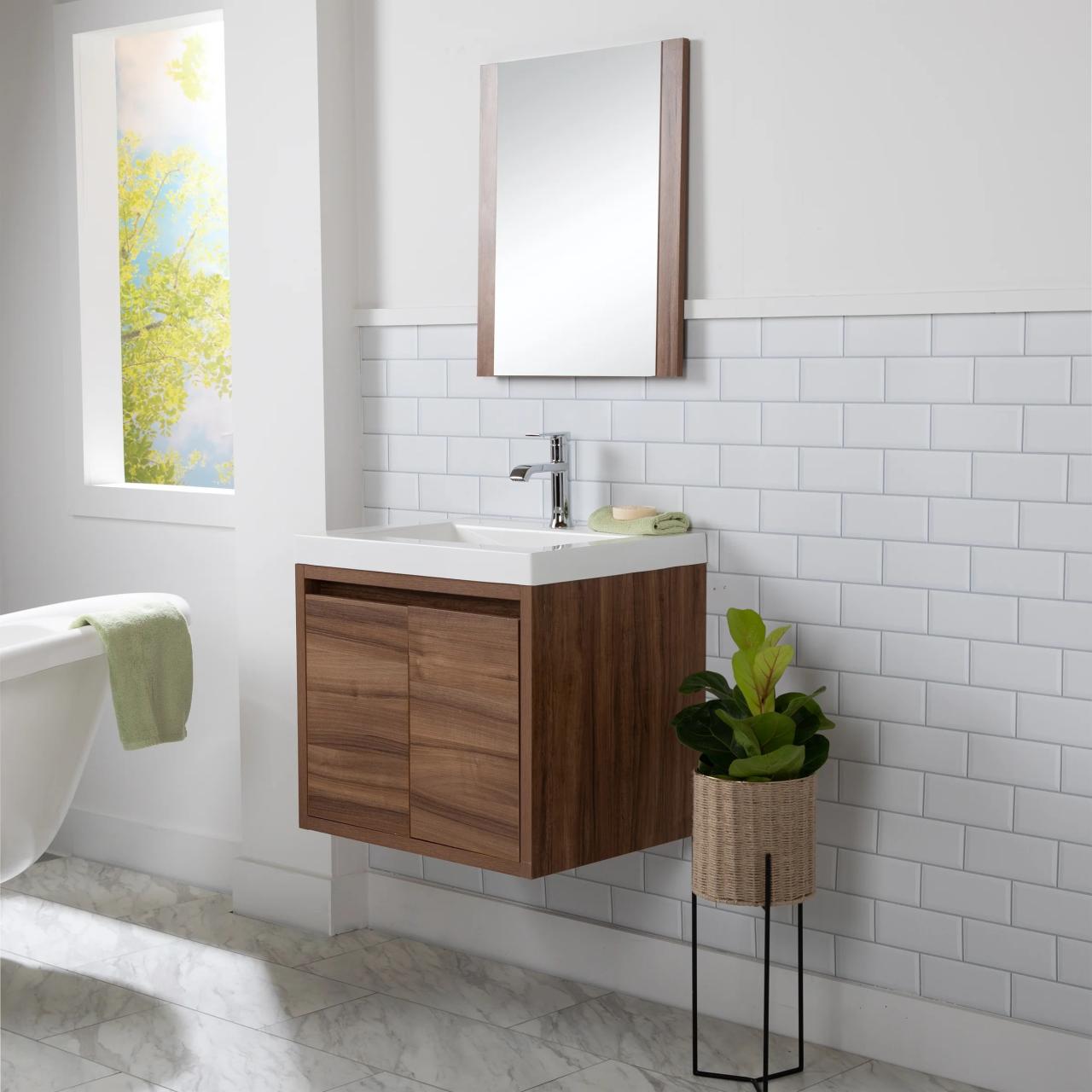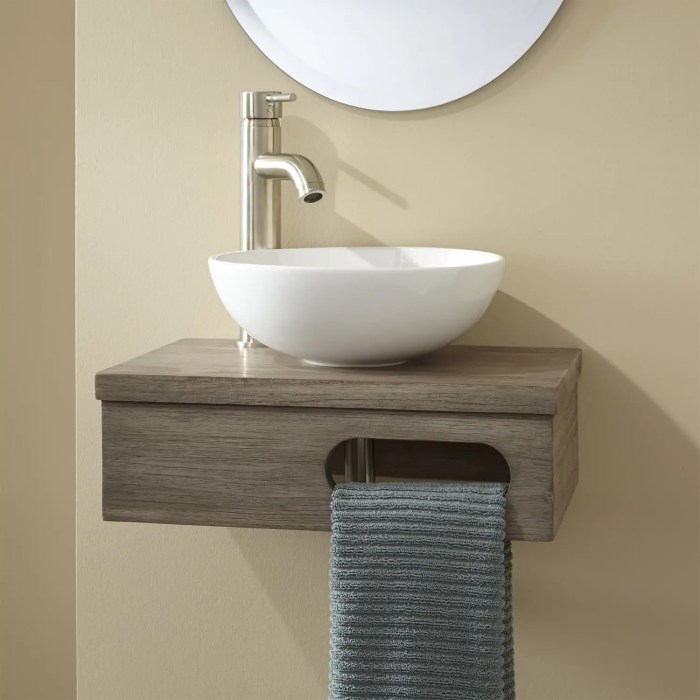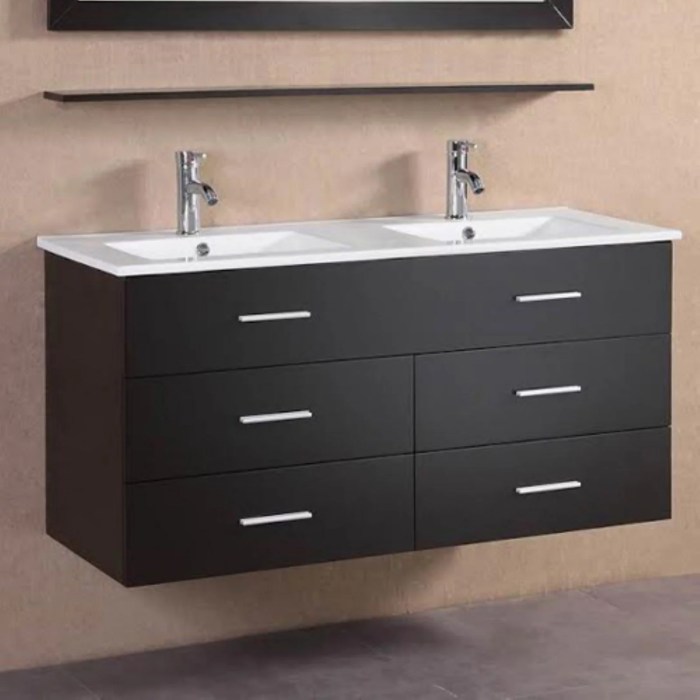In the world of interior design, bathrooms have evolved from purely functional spaces into havens of relaxation and personal expression. For those with smaller bathrooms, the quest for both style and functionality can be a challenge. Enter the modern floating bathroom vanity, a space-saving solution that combines sleek design with ample storage.
Floating vanities are mounted to the wall, leaving the floor space beneath them open. This creates an illusion of spaciousness, making them ideal for small bathrooms. Their clean lines and minimalist aesthetics add a touch of contemporary flair, while their various storage options ensure that your bathroom essentials are always within reach.
Floating Vanity Benefits
Floating vanities are an excellent space-saving solution for small bathrooms. They are mounted to the wall, rather than resting on the floor, which creates the illusion of more space. This is especially beneficial in bathrooms where every inch counts.Floating vanities also make it easier to clean the floor, as there is no vanity base to get in the way.
This can be a major advantage in small bathrooms, where it can be difficult to maneuver around a traditional vanity.
Small Bathroom Layouts
Floating vanities are a good choice for a variety of small bathroom layouts. They can be used in bathrooms with a single sink or a double sink. They can also be used in bathrooms with a shower or bathtub.In bathrooms with a single sink, a floating vanity can be placed against a wall or in a corner.
This will free up floor space for other bathroom fixtures, such as a toilet or a linen cabinet.In bathrooms with a double sink, floating vanities can be placed on opposite walls. This will create a more symmetrical look and feel.
It will also make it easier for two people to use the bathroom at the same time.In bathrooms with a shower or bathtub, a floating vanity can be placed against the wall opposite the shower or bathtub. This will create a more open and airy feel.
It will also make it easier to get in and out of the shower or bathtub.
Modern Design Features
Modern floating vanities embody a sleek and contemporary aesthetic that elevates the functionality and style of small bathrooms. These vanities are characterized by clean lines, geometric shapes, and a minimalist approach that emphasizes simplicity and elegance.
Materials and Finishes
Modern floating vanities offer a wide range of finishes to complement various bathroom designs. Wood, metal, and stone are popular choices that add warmth, durability, and sophistication to the space. Wooden vanities exude a natural charm and can be stained or painted to match the bathroom’s color scheme.
Metal vanities, often made from stainless steel or brushed nickel, bring a sleek and industrial touch. Stone vanities, such as marble or granite, offer a luxurious and timeless appeal.
Functional Considerations
Storage space is crucial in small bathrooms, where every square foot counts. Floating vanities offer ample storage options to keep your essentials organized and within reach.
Storage Options in Floating Vanities
Floating vanities come with various storage options, including:
Drawers
Deep drawers provide ample space for toiletries, towels, and other bathroom necessities.
Shelves
Open or closed shelves offer easy access to frequently used items like hand soap and extra toilet paper.
Cabinets
Full-sized cabinets provide hidden storage for bulky items like cleaning supplies and spare towels.
Maximizing Storage Capacity
To maximize storage capacity while maintaining a modern aesthetic:
- Choose vanities with multiple drawers and shelves.
- Utilize vertical space by adding tall cabinets or shelves.
- Consider built-in organizers within drawers or cabinets for additional compartmentalization.
- Opt for vanities with slim profiles to save floor space while providing ample storage.
Materials and Durability
Modern floating vanities come in a variety of materials, each with its own unique set of advantages and disadvantages. Here’s a closer look at the most common materials used:
- Medium-density fiberboard (MDF) is a type of engineered wood made from wood fibers that are bonded together with resin. MDF is a popular choice for floating vanities because it is affordable, lightweight, and easy to work with. However, MDF is not as durable as solid wood and can be damaged by water if not properly sealed.
- Plywood is another type of engineered wood made from thin layers of wood that are glued together. Plywood is more durable than MDF and is less likely to be damaged by water. However, plywood can be more expensive than MDF.
- Solid wood is the most durable material for floating vanities. Solid wood is also more expensive than MDF or plywood, but it will last longer and is less likely to be damaged by water.
When choosing a material for your floating vanity, it is important to consider the following factors:
- Durability: How long do you want your vanity to last?
- Water resistance: How likely is your vanity to be exposed to water?
- Maintenance: How easy is the material to clean and maintain?
For small bathrooms with high humidity, it is important to choose a material that is water-resistant and easy to clean. Solid wood or plywood are good choices for these types of bathrooms.
Installation and Maintenance
Installing a floating vanity in a small bathroom requires careful planning and execution. By following the proper steps and using the right tools, you can ensure a secure and level installation.
Before starting the installation, make sure you have all the necessary tools and materials, including a level, a drill, a screwdriver, and mounting hardware.
Installation
- Mark the location of the vanity on the wall, ensuring it is level and centered.
- Drill pilot holes into the wall at the marked locations.
- Insert the mounting hardware into the pilot holes and secure it tightly.
- Hang the vanity on the mounting hardware, ensuring it is level and secure.
Maintenance
Floating vanities require minimal maintenance to keep them looking their best. Regular cleaning with a mild detergent and water will suffice.
For any scratches or minor damage, you can use a touch-up kit or consult a professional for repairs.
Last Point
Whether you’re looking to maximize space, enhance the aesthetics of your bathroom, or simply upgrade your storage solutions, a modern floating bathroom vanity is an excellent choice. Its combination of functionality, style, and durability makes it a worthwhile investment for any small bathroom.



